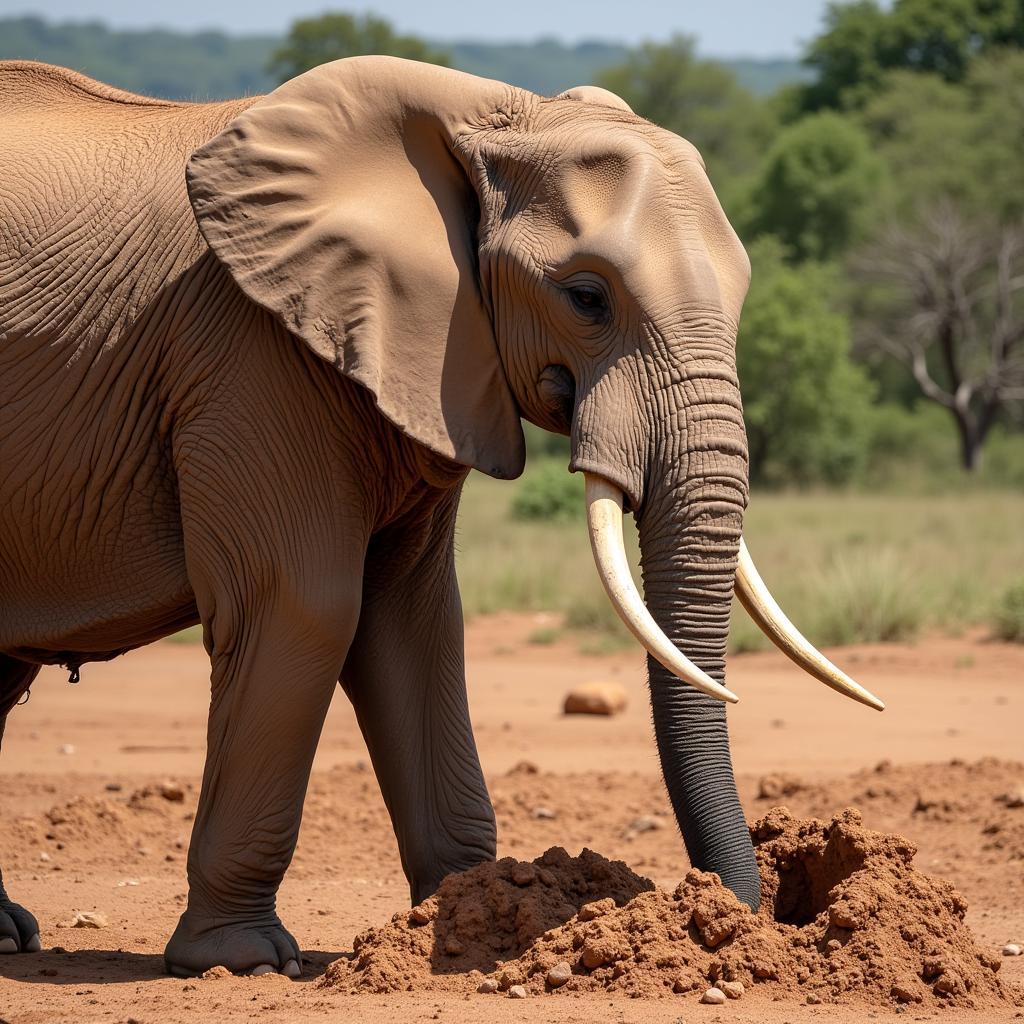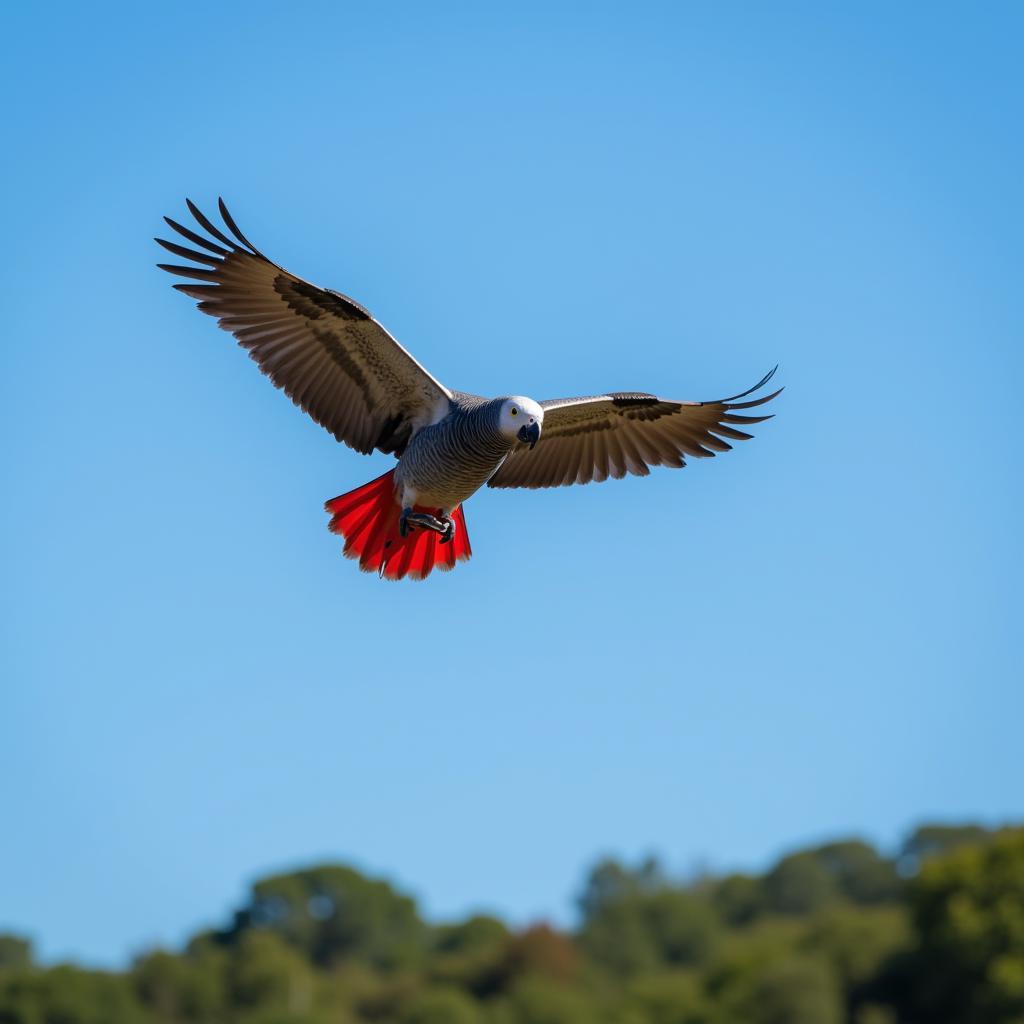African Elephants Evolving Without Tusks
The phenomenon of African Elephants Evolving Without Tusks is a stark example of the powerful selective pressure exerted by poaching. This adaptation, driven by the ivory trade, is increasingly prevalent in several African elephant populations and raises critical questions about the future of these magnificent creatures.
The Ivory Trade’s Impact on Tuskless Elephants
The illegal ivory trade has decimated elephant populations across Africa. Poachers target elephants with the largest tusks, leaving behind those with smaller tusks or none at all. This creates a survival advantage for tuskless elephants, who are less likely to be killed for their ivory. Consequently, the genes responsible for tusklessness are passed down to subsequent generations, leading to a noticeable increase in the number of tuskless elephants in certain areas.
How Tusklessness is Inherited
The trait of tusklessness is primarily linked to the X chromosome. Female elephants inherit two X chromosomes. If one carries the tuskless gene, they have a 50% chance of being tuskless. Male elephants, however, inherit only one X chromosome. If they inherit the tuskless gene, they will invariably be tuskless. This genetic mechanism explains why tusklessness is more prevalent in female elephant populations.
The Evolutionary Implications of Tusklessness
While tusklessness offers a survival advantage in the face of poaching, it also presents significant challenges for elephants. Tusks play a crucial role in various aspects of elephant life, including foraging, defense, and social interactions.
The Role of Tusks in Elephant Survival
Elephants use their tusks to dig for water and minerals, strip bark from trees, and defend themselves against predators. Tusks are also essential for establishing dominance within the herd and attracting mates. The absence of tusks can therefore impact an elephant’s ability to thrive in its natural environment.
 Elephant Using Tusks for Digging
Elephant Using Tusks for Digging
Adapting to a Tuskless Existence
Tuskless elephants are forced to adapt to survive without these essential tools. They may rely on alternative foraging methods, such as using their trunks to break branches or relying on other herd members with tusks for assistance. These adaptations demonstrate the remarkable resilience of elephants in the face of adversity.
“The rapid evolution of tusklessness in response to poaching is a testament to the incredible adaptability of elephants,” notes Dr. Sarah Jones, a renowned wildlife biologist specializing in African elephant conservation. “However, it’s crucial to remember that this adaptation comes at a cost, impacting their natural behaviors and ecological roles.”
Protecting Elephants and Their Future
The rise of tuskless elephants underscores the urgent need to combat poaching and protect these iconic animals. Strengthening anti-poaching efforts, raising awareness about the devastating impact of the ivory trade, and supporting elephant conservation initiatives are crucial steps towards ensuring their long-term survival.
What Can Be Done to Help?
Supporting organizations dedicated to elephant conservation, advocating for stricter regulations against the ivory trade, and educating others about the importance of protecting elephants are all effective ways to contribute to their survival.
“We must act decisively to protect elephants from further decline,” emphasizes Dr. Joseph Ngugi, a leading expert in African wildlife management. “The future of these magnificent creatures depends on our collective efforts to combat poaching and preserve their habitats.”
Conclusion
The evolution of African elephants without tusks is a direct consequence of human activity and a stark reminder of the impact of poaching. While tusklessness offers a short-term survival advantage, it also presents long-term challenges for these animals. By working together to combat the illegal ivory trade and protect elephant populations, we can help ensure that future generations can continue to marvel at these incredible creatures in their natural habitats.
FAQ
-
Why are some African elephants evolving without tusks? The primary driver is poaching pressure. Elephants without tusks are less likely to be targeted for their ivory, giving them a survival advantage.
-
Is tusklessness only occurring in female elephants? While it’s more common in females due to the genetic mechanism of inheritance, males can also be tuskless.
-
How does tusklessness affect an elephant’s survival? Tusks are essential tools for foraging, defense, and social interactions. Tuskless elephants must adapt to survive without them.
-
What can be done to help protect elephants? Supporting conservation organizations, advocating for stricter ivory trade regulations, and educating others about elephant conservation are all important actions.
-
Is the evolution of tusklessness a positive or negative adaptation? While it offers a survival advantage in the face of poaching, it presents challenges for elephants in their natural environment. It is a complex issue with both benefits and drawbacks.
-
Are there any other factors contributing to tusklessness besides poaching? While poaching is the primary driver, other factors like genetics and environmental conditions may also play a role.
-
What is the long-term impact of tusklessness on elephant populations? The long-term consequences are still being studied, but it could potentially affect elephant behavior, social structures, and ecological roles.
Need further assistance? Contact us 24/7: Phone: +255768904061, Email: kaka.mag@gmail.com or visit us at Mbarali DC Mawindi, Kangaga, Tanzania.
You might also be interested in reading more about elephant conservation efforts on our website, such as “The Impact of Habitat Loss on African Elephants” and “Community-Based Conservation Strategies for Elephants”.


